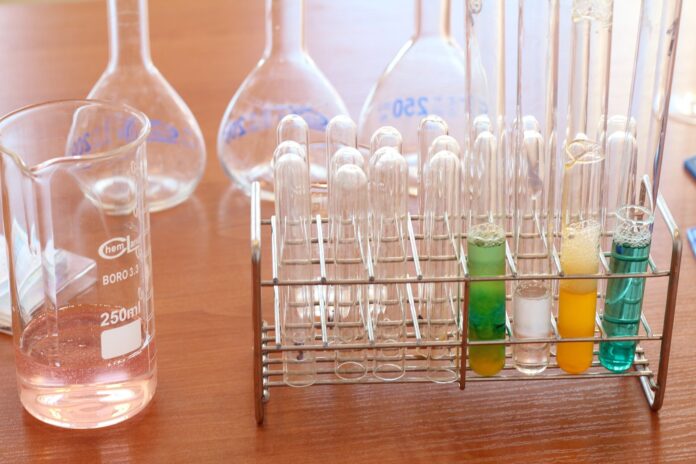The discovery of a new chemical that can cause cancer has sent shockwaves through the scientific community and beyond. This chemical, known as Per- and polyfluoroalkyl substances (PFAS), has been widely used in industrial and consumer products for decades, including in non-stick cookware, waterproof clothing, and food packaging. The problem is that PFAS are highly persistent and do not break down easily in the environment, which means they can accumulate in soil, water, and living organisms, including humans. As a result, exposure to PFAS has become a major concern for public health, with studies linking these chemicals to a range of health problems, including cancer. It’s a wake-up call that reminds us of the potential risks associated with the everyday products we use, and underscores the importance of continued research and regulation to protect public health.
PFAS are a group of man-made chemicals that are characterized by the presence of one or more carbon-fluorine bonds. These carbon-fluorine bonds are some of the strongest in nature, which makes PFAS highly resistant to degradation and breakdown in the environment. The most common PFAS compounds are perfluorooctanoic acid (PFOA) and perfluorooctane sulfonate (PFOS), although there are hundreds of other related compounds.
PFAS are typically synthesized using a process known as fluorination, which involves replacing one or more hydrogen atoms in an organic compound with fluorine atoms. This process can be carried out using a variety of methods, including electrochemical fluorination, plasma fluorination, and direct fluorination.
PFAS have unique chemical and physical properties that make them useful in a wide range of applications. For example, their strong carbon-fluorine bonds make them highly resistant to heat, chemicals, and moisture, which makes them useful in non-stick coatings and waterproof fabrics. PFAS are also used in firefighting foam because they are effective at extinguishing fires involving flammable liquids.
The use of FAS in many industries has raised concerns due to their environmental and health impacts. However, alternative materials and methods have been developed, including plant-based formulas for textile water repellency, ceramic and silicone coatings for non-stick cookware, and natural alternatives for food packaging. By adopting these safer alternatives, we can reduce the risks of exposure to harmful chemicals while still achieving comparable performance. This is an important step towards improving the safety and sustainability of the products we use daily
However, the same properties that make PFAS useful also make them persistent in the environment and potentially harmful to human health. PFAS can accumulate in the bodies of living organisms, including humans, and have been linked to a variety of health problems, including cancer, thyroid disease, immune system dysfunction, and reproductive and developmental problems.
PFAS can enter the body through various routes of exposure, including drinking water, food, and air. The potential danger of PFAS-containing products is that they can release these chemicals into the environment and ultimately into our bodies, where they can persist and accumulate over time, leading to adverse health effects.
PFAS exposure can lead to oxidative stress and inflammation, which are known to play a role in cancer development. PFAS may also disrupt normal cell signaling pathways and gene expression, which can contribute to the development of cancer.
In addition, some PFAS compounds have been shown to be genotoxic, meaning they can cause DNA damage, which is a key step in the development of cancer. For example, perfluorooctanoic acid (PFOA) has been shown to cause DNA damage and to increase the incidence of liver tumors in laboratory animals.
Another way in which PFAS may contribute to cancer development is through their ability to bioaccumulate in living organisms. PFAS can accumulate in certain tissues, such as the liver and the kidneys, and may lead to chronic inflammation and tissue damage, which can increase the risk of cancer.
There are several strategies that can be used to control PFAS contamination and exposure. One of the most effective ways to control PFAS contamination and exposure is to reduce or eliminate the use of these chemicals in industrial and consumer products. Contaminated water and soil can be treated using various methods, including activated carbon adsorption, ion exchange, and reverse osmosis. The US Environmental Protection Agency (EPA) has established a health advisory level of 70 parts per trillion (ppt) for two types of PFAS (PFOA and PFOS) in drinking water. Other countries and organizations have established their own guidelines or limits. PFAS can enter the food chain through contaminated soil, water, or air, and may also be present in food packaging. It is important to monitor and regulate PFAS levels in food and food packaging to reduce exposure.
Permissible limits for PFAS vary depending on the specific compound and the country or organization setting the limit. For example, the US EPA has established a health advisory level of 70 ppt for PFOA and PFOS in drinking water, while the European Union has set a limit of 100 nanograms per liter (ng/L) for PFOS in drinking water. It is important for governments to continue monitoring and regulating PFAS to ensure that exposure is kept to a minimum and that permissible limits are updated as new research becomes available.
The use of FAS in many industries has raised concerns due to their environmental and health impacts. However, alternative materials and methods have been developed, including plant-based formulas for textile water repellency, ceramic and silicone coatings for non-stick cookware, and natural alternatives for food packaging. By adopting these safer alternatives, we can reduce the risks of exposure to harmful chemicals while still achieving comparable performance. This is an important step towards improving the safety and sustainability of the products we use daily.
The author is Assistant Director in Sindh Environmental Protection Agency
He can be reached at [email protected] and tweets @fayyazSHussain





















